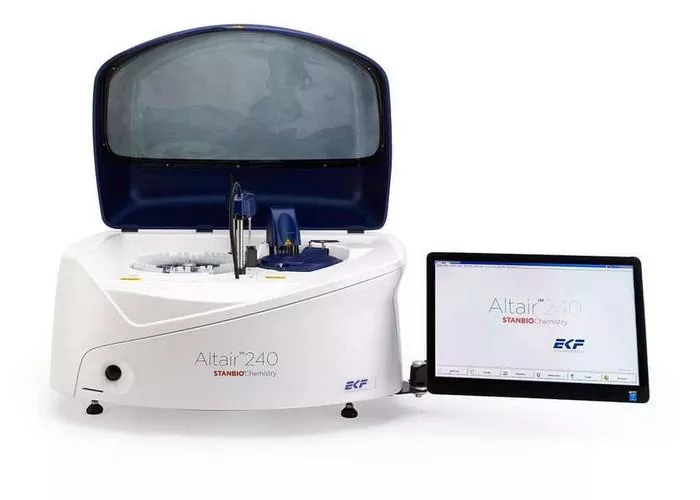Oxygen measurement plays a crucial role in various industrial applications, including combustion control, environmental monitoring, medical applications, and safety systems. One of the widely used techniques for oxygen measurement is the paramagnetic method. A paramagnetic oxygen analyzer is a highly accurate and reliable instrument designed to measure the concentration of oxygen in gas mixtures. This article explores the working principle, design, and applications of paramagnetic oxygen analyzers.
Understanding Paramagnetism and Its Role in Oxygen Measurement
Paramagnetism is a property exhibited by certain materials, including oxygen, in which they are weakly attracted to a magnetic field. Oxygen molecules (₂) have unpaired electrons, making them paramagnetic in nature. This unique characteristic allows oxygen to be distinguished from other gases using a magnetic field, forming the basis of paramagnetic oxygen analyzers.
How Do Paramagnetic Oxygen Analyzers Work
A paramagnetic oxygen analyzer operates based on the attraction of oxygen molecules to a magnetic field. The working mechanism of this analyzer typically involves the following components and steps:
1. Magnetic Field Generation
The analyzer consists of strong permanent magnets or an electromagnet that generates a stable magnetic field. This field creates a region where paramagnetic gases, such as oxygen, experience a force of attraction.
2. Sample Gas Flow
A sample of the gas mixture to be analyzed is introduced into the measurement chamber. The chamber is designed to allow free movement of the gas while being exposed to the magnetic field.
3. Paramagnetic Effect and Detection
There are two primary methods used to detect oxygen concentration:
Magnetic Wind Method (Dumbbell System): This method employs a small, nitrogen-filled glass dumbbell suspended within the magnetic field. Since nitrogen is diamagnetic (repelled by magnetic fields), the presence of paramagnetic oxygen creates an imbalance. The oxygen molecules are attracted to the field, displacing the dumbbell and creating rotational movement. A light beam and a photocell detect this movement, which is proportional to the oxygen concentration.
Pressure Differential Method: In this approach, two chambers are connected by a pressure-sensitive membrane. When oxygen-rich gas is exposed to the magnetic field, it migrates toward the stronger field, causing a pressure difference between the chambers. This pressure variation is then measured and correlated to the oxygen concentration.
4. Signal Processing and Output
The detected displacement or pressure change is converted into an electrical signal, which is then processed by an electronic circuit to determine the oxygen concentration. The output is displayed on a digital or analog meter, and in some cases, it can be transmitted to a control system for automated monitoring and adjustments.
Advantages of Paramagnetic Oxygen Analyzers
Paramagnetic oxygen analyzers offer several advantages over other oxygen measurement techniques, making them widely used in various applications:
High Accuracy and Sensitivity: Due to the direct measurement of oxygen’s paramagnetic properties, these analyzers provide precise and reliable readings.
Fast Response Time: The detection mechanism allows for real-time monitoring of oxygen levels, making them ideal for dynamic processes.
Non-Consumable Sensor: Unlike electrochemical sensors, paramagnetic analyzers do not require periodic sensor replacement, reducing maintenance costs.
Long-Term Stability: These analyzers exhibit stable performance over extended periods without significant drift.
Selective Measurement: Since only oxygen is paramagnetic, the analyzer is highly selective and unaffected by other gases in the mixture.
Applications of Paramagnetic Oxygen Analyzers
Due to their precision and robustness, paramagnetic oxygen analyzers are employed in various industries:
Industrial Process Control: Used in chemical manufacturing, metal refining, and glass production to monitor oxygen levels in process gases.
Combustion Efficiency Monitoring: Essential for optimizing combustion in power plants, boilers, and furnaces by controlling oxygen supply.
Environmental Monitoring: Employed in emissions monitoring and atmospheric studies to measure oxygen concentrations in air samples.
Medical and Laboratory Applications: Utilized in medical gas analysis, anesthesia monitoring, and respiratory equipment calibration.
Safety Systems: Integrated into oxygen deficiency monitoring systems in confined spaces to prevent asphyxiation risks.
Maintenance and Calibration of Paramagnetic Oxygen Analyzers
To ensure optimal performance, paramagnetic oxygen analyzers require periodic maintenance and calibration. The following steps are commonly performed:
Calibration with Standard Gases: Regular calibration using known oxygen concentrations ensures accuracy.
Cleaning of Optical Components: If a dumbbell-based system is used, optical components such as mirrors and sensors should be kept clean.
Checking Gas Flow and Pressure: Proper gas flow rates must be maintained for consistent readings.
Routine Inspection for Leaks: Any leaks in the gas sampling system can affect measurement accuracy and should be promptly addressed.
Limitations of Paramagnetic Oxygen Analyzers
While these analyzers offer numerous benefits, they also have some limitations:
Sensitivity to Vibrations: Mechanical components, such as the dumbbell system, can be affected by external vibrations.
Requirement for Clean Sample Gas: Contaminants like dust or moisture can interfere with sensor performance.
Limited Suitability for Certain Gases: While highly selective for oxygen, paramagnetic analyzers may not be ideal for gas mixtures with strong magnetic interference.
Conclusion
Paramagnetic oxygen analyzers are a highly effective and reliable solution for measuring oxygen concentration in various gas mixtures. Their working principle is based on the paramagnetic properties of oxygen, allowing for precise, stable, and selective measurements. With applications in industries ranging from environmental monitoring to industrial process control and medical diagnostics, these analyzers play a vital role in ensuring safety, efficiency, and compliance. While they require proper maintenance and calibration, their advantages far outweigh their limitations, making them a preferred choice for oxygen measurement in critical applications.

